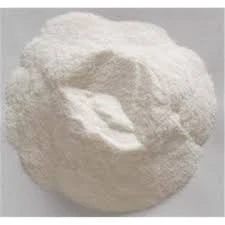
Nov . 23, 2024 07:36 Back to list
cellulose ether
The Role of Cellulose Ethers in Modern Applications
Cellulose, a natural polymer, is the most abundant organic compound on Earth. It forms the primary structural component of the cell walls in green plants, algae, and some fungi. Cellulose ethers are derived from cellulose through a process of etherification, where cellulose reacts with various chemical agents to introduce functional groups, changing its solubility and physical properties. These modifications make cellulose ethers highly valuable across a wide array of industries, including pharmaceuticals, food, and construction.
One of the most widely used cellulose ethers is methylcellulose (MC), which is produced by introducing methyl groups to the hydroxyl groups of cellulose. This modification confers unique properties on the cellulose, such as solubility in cold water and the formation of a gel when heated. Due to these characteristics, methylcellulose finds extensive use as a thickening agent, emulsifier, and film-forming agent, particularly in the food industry. It helps improve the texture and stability of various food products, including sauces, dressings, and ice creams.
Another important cellulose ether is hydroxypropyl methylcellulose (HPMC), which has found significant application in pharmaceuticals as a polymeric excipient. HPMC serves as a binder in tablets and as a controlled-release agent in drug formulations, allowing for a gradual release of therapeutic agents in the body. This property not only enhances the effectiveness of drugs but also improves patient compliance by reducing the frequency of dosing.
In construction, cellulose ethers, particularly hydroxyethyl cellulose (HEC) and HPMC, play a critical role as additives in cement and plaster. These cellulose ethers enhance the workability and adhesion of construction materials, making them easier to apply while improving water retention. This is crucial in preventing cracking and ensuring long-lasting structures. Additionally, their biodegradability makes cellulose ethers an environmentally friendly choice in construction applications.
cellulose ether

The versatility of cellulose ethers is also showcased in personal care products. They are used in shampoos, lotions, and creams as thickening agents and stabilizers. Their ability to form gels and retain moisture enhances the texture and performance of these products, catering to a wide range of consumer preferences. Furthermore, cellulose ethers offer a sustainable alternative to synthetic polymers, aligning with the growing trend toward eco-friendly formulations in the cosmetics industry.
Beyond these applications, cellulose ethers are increasingly being explored for advanced uses in emerging technologies. In biomedical engineering, they are examined for their potential in drug delivery systems and tissue engineering scaffolds due to their biocompatibility and ability to support cell growth. Researchers are also investigating their role in developing biodegradable packaging materials, addressing the urgent need for sustainable solutions to plastic pollution.
Despite the myriad of advantages cellulose ethers offer, challenges remain in their production and application. The synthesis process requires careful control to achieve the desired properties, and variations in source materials can lead to inconsistencies. Moreover, research is ongoing to enhance their performance and expand their applications further.
In conclusion, cellulose ethers represent a remarkable class of compounds that bridge the gap between nature and technology. Their widespread use in food, pharmaceuticals, construction, and personal care, combined with their potential for innovation in new fields, underscores their importance in contemporary society. As industries continue to prioritize sustainability and performance, cellulose ethers are poised to play an even more significant role in shaping the future of materials science and applications. As we move forward, ongoing research and development will likely yield even more exciting possibilities for these versatile compounds.
-
Versatile Hpmc Uses in Different Industries
NewsJun.19,2025
-
Redispersible Powder's Role in Enhancing Durability of Construction Products
NewsJun.19,2025
-
Hydroxyethyl Cellulose Applications Driving Green Industrial Processes
NewsJun.19,2025
-
Exploring Different Redispersible Polymer Powder
NewsJun.19,2025
-
Choosing the Right Mortar Bonding Agent
NewsJun.19,2025
-
Applications and Significance of China Hpmc in Modern Industries
NewsJun.19,2025







